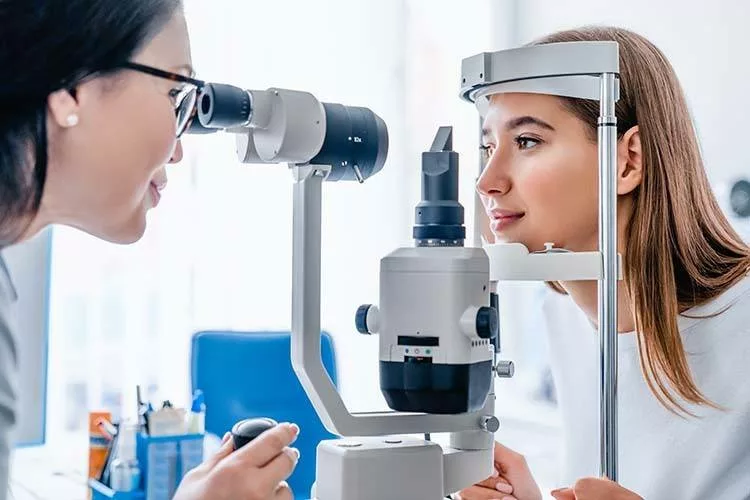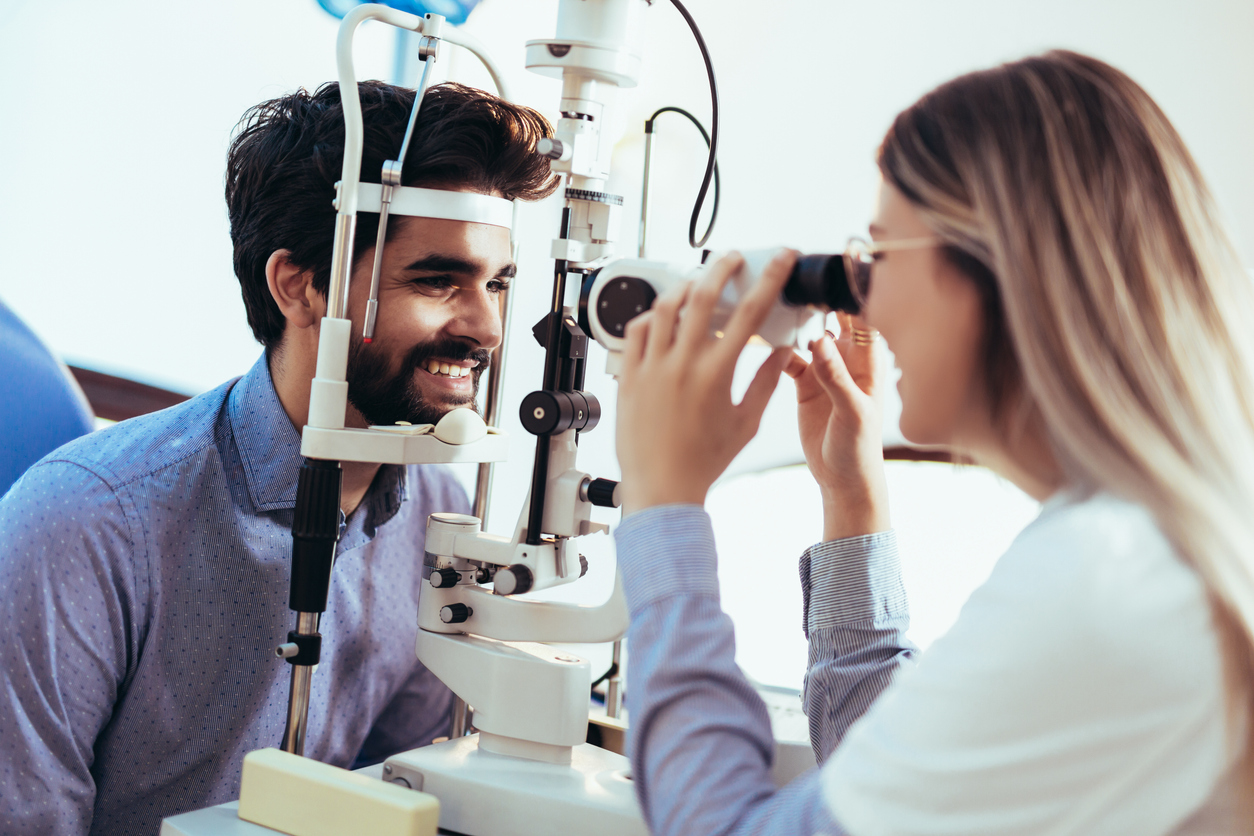The Comprehensive Eye Exam: What to Expect Throughout Your Visit to the Eye Physician
A visit to the eye physician for a comprehensive eye exam is more than a routine examination; it is a critical step in protecting your visual health and wellness. From the preliminary conversation of your case history to the precision of the visual skill test, each part of the exam offers a specific purpose. Yet exactly what takes place during the eye health and wellness analysis, and how does it affect the prescription process? Comprehending these aspects is vital for those who wish to keep ideal eyesight. As we discover each part, the importance of follow-up recommendations will certainly additionally end up being clear.
First Examination
The initial appointment during an eye test functions as a crucial structure for understanding an individual's visual health and wellness needs. This phase sets the tone for the entire exam process, permitting the optometrist to collect vital info about the patient's case history, way of living, and details vision issues. By meticulously examining any pre-existing problems, drugs, or previous surgical treatments, the eye treatment specialist can tailor the exam to attend to specific requirements efficiently.

Moreover, the first appointment is an opportunity for clients to voice any type of worries or concerns, promoting a collaborative partnership with their healthcare service provider. This interaction not just makes certain that the client feels informed and comfortable yet likewise encourages them to participate actively in their eye health management. Jointly, these conversations allow the optometrist to create a personalized examination plan, ensuring optimal treatment and precise medical diagnosis.
Visual Skill Test
Starting the core components of an eye examination, the aesthetic acuity examination is designed to examine the intensity and clarity of an individual's vision. This critical examination assists determine exactly how well a person can determine letters or symbols at a standard distance, generally utilizing a Snellen chart (Eye Doctor). The graph consists of rows of letters that reduce in size inside out, with the individual placed at a traditional range of 20 feet
During the examination, the patient is asked to cover one eye and check out out loud the tiniest line of letters they can see plainly. This procedure is repeated for the other eye. The results are taped as a portion, with 20/20 vision showing normal visual acuity-- where the individual can see at 20 feet what an individual with regular vision can see at that range.
The aesthetic skill examination additionally identifies potential refractive errors such as astigmatism, hyperopia, or nearsightedness, which could necessitate corrective lenses. By establishing a baseline of visual performance, the examination is an important analysis device that helps the eye treatment expert in establishing a suitable treatment plan tailored to the client's unique visual needs.
Eye Health Assessment
Following the aesthetic skill examination, a thorough eye wellness analysis is carried out to guarantee the overall health of the eyes. This crucial segment of the eye examination entails a detailed analysis of both the outside and internal structures of the eye. The eye doctor or optometrist starts by checking out the eyelids, cornea, conjunctiva, and sclera for any kind of indications of infection, inflammation, or abnormalities. Making use of specific equipment like a slit light, the expert gets a magnified sight of the eye's composition, enabling detailed examination. view it now
Next, focus shifts to the interior frameworks. Through the usage of ophthalmoscopy or fundus photography, the retina, optic nerve, and blood vessels are diligently assessed. This action is important for recognizing conditions such as retinal detachment, glaucoma, or diabetic retinopathy. Oftentimes, student extension is carried out to boost exposure of the interior eye frameworks, although this might cause short-lived light sensitivity for the client.
Additionally, intraocular pressure is determined to evaluate for glaucoma danger. This is typically done utilizing tonometry, which can find raised stress degrees that could suggest potential damage to the optic nerve. Collectively, these assessments develop a thorough evaluation to maintain eye wellness.
Refraction and Prescription
Refraction is a sophisticated treatment conducted by eye treatment professionals to establish the exact lens power needed to correct refractive mistakes such as myopia, hyperopia, astigmatism, and presbyopia. The objective of this procedure is to assess just how light bends as pop over to this web-site it passes through the eye, permitting the expert to figure out whether corrective lenses are essential for improved aesthetic acuity.
Throughout the refraction process, the person is asked to look with a phoropter, a device that consists of various lenses. The expert will systematically transform these lenses and ask the patient to contrast clarity in between options till the very best feasible vision is achieved. This procedure is critical in crafting a precise prescription that defines the appropriate lens power for spectacles or contact lenses.
The prescription originated from this treatment not only enhances vision yet also works as a structure for selecting appropriate rehabilitative eyewear. It is important to guarantee that prescriptions are regularly updated, as modifications in vision can take place over time, highlighting the relevance of regular eye evaluations. This careful focus to information helps maintain clear, comfortable vision in every day life.
Follow-Up Referrals

Throughout a follow-up see, the eye physician will conduct a collection of examinations to assess visual skill and look for any changes in vision that could require an update to the prescription. In addition, the follow-up gives a chance to review useful site any kind of discomfort or issues experienced with existing eyeglasses. Adjustments can be made to make certain convenience and efficacy, whether via lens adjustment or frame changes.
For clients with ongoing problems such as glaucoma, diabetes-related eye issues, or macular deterioration, more regular follow-ups may be needed. These consultations are vital for managing and possibly slowing the development of eye disease. Adhering to these suggestions can substantially add to keeping aesthetic health and wellness and protecting against long-lasting complications.
Final Thought
The comprehensive eye test is a vital procedure for maintaining visual wellness, encompassing an in-depth assessment of medical background and vision concerns. Secret components consist of the visual acuity examination, which reviews eyesight clearness, and the eye wellness assessment, which analyzes the general problem of the eyes. Refraction examinations help figure out the specific lens prescription necessary for ideal vision modification. Follow-up referrals provide assistance for continuous eye treatment, making certain that any potential problems are attended to without delay and properly.
A browse through to the eye doctor for a comprehensive eye exam is even more than a routine examination; it is a crucial action in securing your aesthetic health and wellness.Kicking off the core components of an eye examination, the aesthetic skill test is developed to assess the sharpness and quality of an individual's vision.Complying with the visual skill examination, a detailed eye health assessment is performed to make sure the overall well-being of the eyes. These brows through enable the eye care specialist to keep an eye on changes in vision, upgrade prescriptions, and examine the overall wellness of the eyes. Secret parts include the visual skill test, which reviews vision quality, and the eye health and wellness assessment, which checks out the general problem of the eyes.